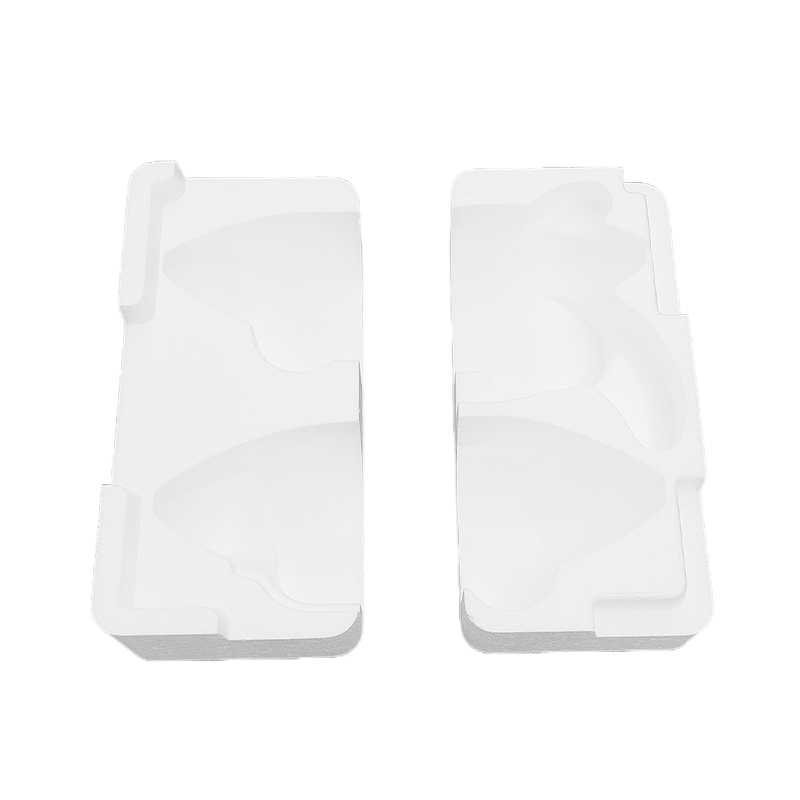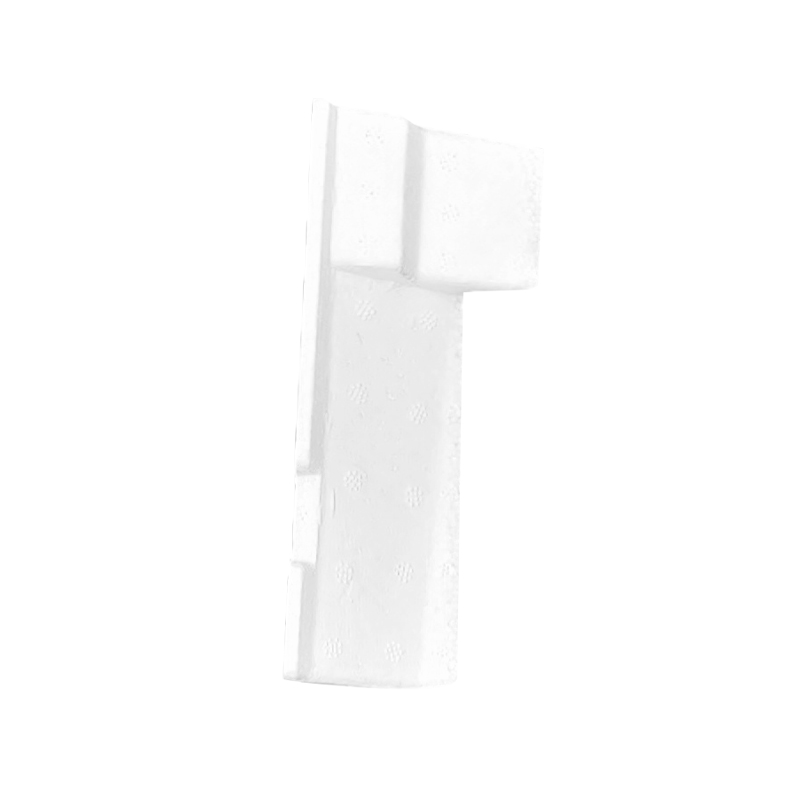How does batteries EPS packaging for batteries maintain performance and maximize space utilization?
Release Time : 2025-10-24
With the rapid development of the new energy industry, high-energy-density batteries such as lithium batteries are widely used in electric vehicles, energy storage systems, consumer electronics, and power tools. During battery transportation, storage, and distribution, packaging must not only ensure the integrity of the battery cells and prevent short circuits, leakage, and even fires caused by collisions, crushing, or drops, but also ensure logistical efficiency and maximize space and weight savings. batteries EPS packaging, with its excellent cushioning properties and highly customizable design, has become a mainstream protective solution.
1. Material Properties: A Lightweight, High-Strength Cushioning Foundation
EPS material is formed from polystyrene beads heated and foamed by steam. This creates a large number of enclosed micro-bubbles within the foam, forming a typical closed-cell foam structure. This structure gives EPS an extremely low density, making it extremely lightweight without significantly increasing the overall packaging load, meeting the stringent lightweighting requirements of modern logistics. EPS also offers excellent compressive strength and energy absorption capacity. When impacted by external forces, the cells deform and compress through elastic deformation, converting kinetic energy into heat, effectively buffering vibration and impact and protecting the batteries within from damage. Experiments have shown that high-quality EPS packaging can withstand static pressure several times the weight of the battery and multiple drops, ensuring safe transportation.
2. Structural Customization: Precisely Matching Battery Shape to Maximize Space Utilization
One of the core advantages of EPS packaging lies in its high degree of customizability. Using CNC cutting or mold-forming techniques, a customized lining structure can be designed based on the specific size and shape of the battery. Each battery is individually inserted into a precisely molded groove and tightly encased in foam, creating a customizable, secure space. This design not only prevents battery displacement, friction, and collision during transportation, but also effectively prevents accidental contact between electrodes when multiple batteries are connected in parallel or series, reducing the risk of short circuits. More importantly, the customized design maximizes space utilization. The groove depth precisely matches the battery height, eliminating excess space. Multiple batteries are compactly arranged, resulting in a uniform packaging appearance for easy stacking. Compared to traditional packaging methods that combine general-purpose boxes with fillers, customized EPS liners can save 15%-30% in storage and transportation space, significantly improving loading efficiency on containers, pallets, and racks.
3. Compressive Resistance and Stacking Stability: Ensuring Long-Distance Transportation Safety
In real-world logistics, packaging boxes are often stacked in multiple layers, subjecting the bottom packaging to significant pressure. EPS material exhibits excellent compressive resilience, maintaining structural stability even under prolonged pressure and resisting permanent deformation or collapse. By optimizing foam density and wall thickness, support is enhanced in critical load-bearing areas, ensuring that entire boxes of batteries are protected from compression and damage during stacking and transportation. Furthermore, EPS packaging is often used in conjunction with a sturdy outer box, creating a "soft inside, hard outside" composite protective system that further enhances overall compressive resistance.
4. Environmental Adaptability and Safety Considerations
Batteries are sensitive to temperature, humidity, static electricity, and fire resistance. High-quality EPS material offers excellent thermal insulation, which can mitigate the effects of external temperature fluctuations on batteries. Its closed-cell structure absorbs virtually no water, maintaining stable cushioning properties even in humid environments. Some high-end EPS packaging also features anti-static treatment to enhance the safety of lithium battery transportation.
5. Environmental Protection and Sustainable Development Trends
Although EPS was once criticized for its "white pollution" effects, modern EPS packaging is moving towards recyclability and biodegradability. Waste EPS can be melt-recycled into new products, with a recycling rate exceeding 90%. The industry is also exploring bio-based EPS alternatives to further reduce its environmental footprint.
Battery EPS packaging, through its lightweight, high-strength material properties, precisely customized structural design, and excellent compressive cushioning properties, strikes an optimal balance between battery safety and space utilization. It serves not only as a physical safety guard but also as a space optimization expert, improving logistics efficiency.
1. Material Properties: A Lightweight, High-Strength Cushioning Foundation
EPS material is formed from polystyrene beads heated and foamed by steam. This creates a large number of enclosed micro-bubbles within the foam, forming a typical closed-cell foam structure. This structure gives EPS an extremely low density, making it extremely lightweight without significantly increasing the overall packaging load, meeting the stringent lightweighting requirements of modern logistics. EPS also offers excellent compressive strength and energy absorption capacity. When impacted by external forces, the cells deform and compress through elastic deformation, converting kinetic energy into heat, effectively buffering vibration and impact and protecting the batteries within from damage. Experiments have shown that high-quality EPS packaging can withstand static pressure several times the weight of the battery and multiple drops, ensuring safe transportation.
2. Structural Customization: Precisely Matching Battery Shape to Maximize Space Utilization
One of the core advantages of EPS packaging lies in its high degree of customizability. Using CNC cutting or mold-forming techniques, a customized lining structure can be designed based on the specific size and shape of the battery. Each battery is individually inserted into a precisely molded groove and tightly encased in foam, creating a customizable, secure space. This design not only prevents battery displacement, friction, and collision during transportation, but also effectively prevents accidental contact between electrodes when multiple batteries are connected in parallel or series, reducing the risk of short circuits. More importantly, the customized design maximizes space utilization. The groove depth precisely matches the battery height, eliminating excess space. Multiple batteries are compactly arranged, resulting in a uniform packaging appearance for easy stacking. Compared to traditional packaging methods that combine general-purpose boxes with fillers, customized EPS liners can save 15%-30% in storage and transportation space, significantly improving loading efficiency on containers, pallets, and racks.
3. Compressive Resistance and Stacking Stability: Ensuring Long-Distance Transportation Safety
In real-world logistics, packaging boxes are often stacked in multiple layers, subjecting the bottom packaging to significant pressure. EPS material exhibits excellent compressive resilience, maintaining structural stability even under prolonged pressure and resisting permanent deformation or collapse. By optimizing foam density and wall thickness, support is enhanced in critical load-bearing areas, ensuring that entire boxes of batteries are protected from compression and damage during stacking and transportation. Furthermore, EPS packaging is often used in conjunction with a sturdy outer box, creating a "soft inside, hard outside" composite protective system that further enhances overall compressive resistance.
4. Environmental Adaptability and Safety Considerations
Batteries are sensitive to temperature, humidity, static electricity, and fire resistance. High-quality EPS material offers excellent thermal insulation, which can mitigate the effects of external temperature fluctuations on batteries. Its closed-cell structure absorbs virtually no water, maintaining stable cushioning properties even in humid environments. Some high-end EPS packaging also features anti-static treatment to enhance the safety of lithium battery transportation.
5. Environmental Protection and Sustainable Development Trends
Although EPS was once criticized for its "white pollution" effects, modern EPS packaging is moving towards recyclability and biodegradability. Waste EPS can be melt-recycled into new products, with a recycling rate exceeding 90%. The industry is also exploring bio-based EPS alternatives to further reduce its environmental footprint.
Battery EPS packaging, through its lightweight, high-strength material properties, precisely customized structural design, and excellent compressive cushioning properties, strikes an optimal balance between battery safety and space utilization. It serves not only as a physical safety guard but also as a space optimization expert, improving logistics efficiency.







